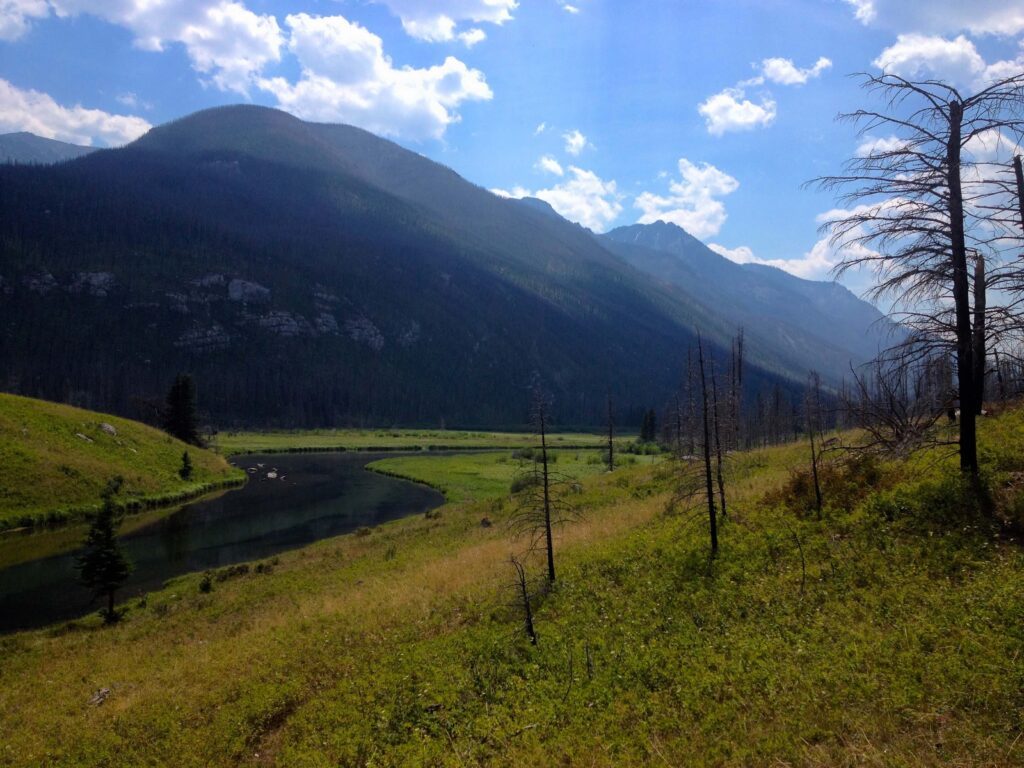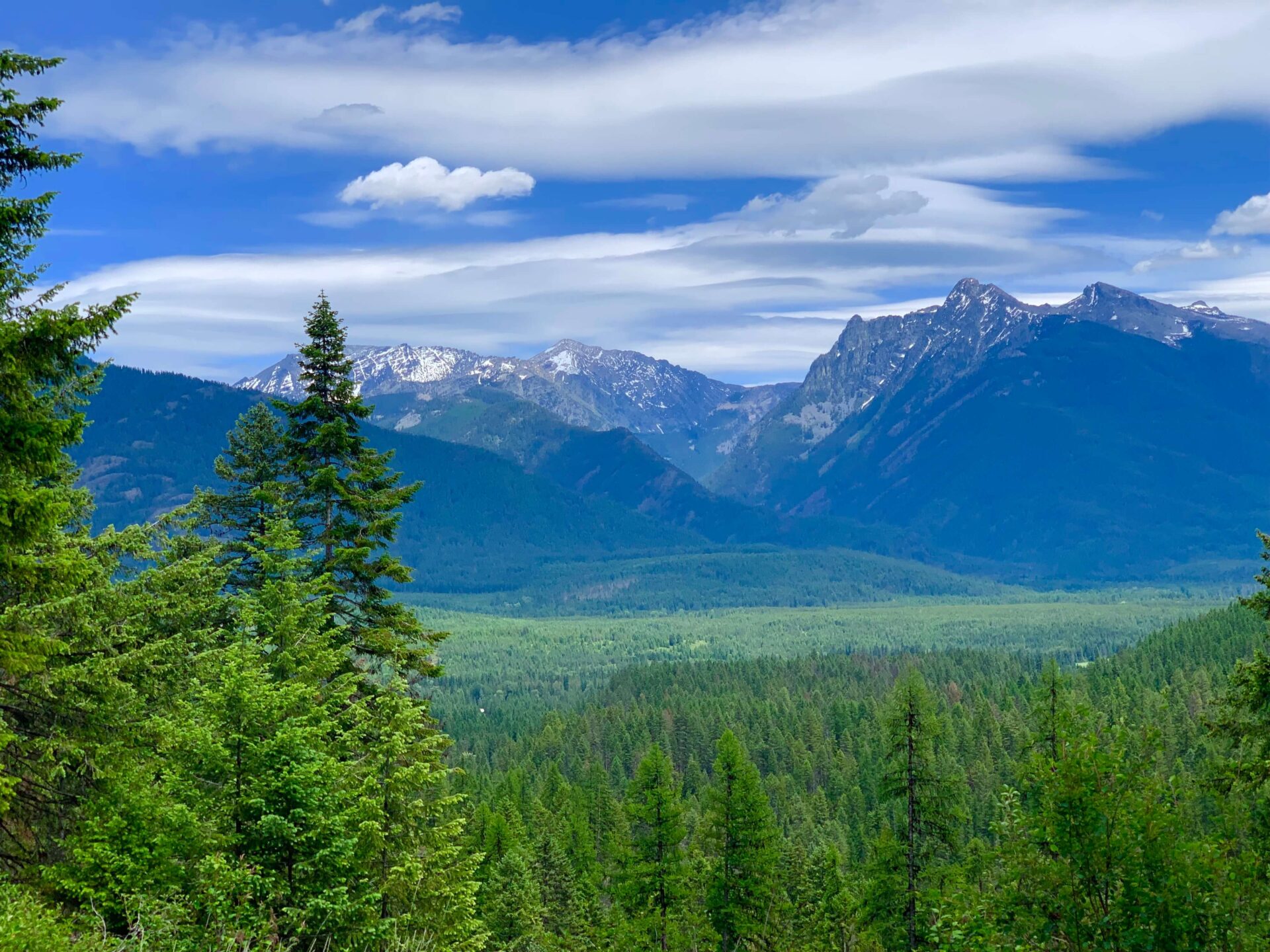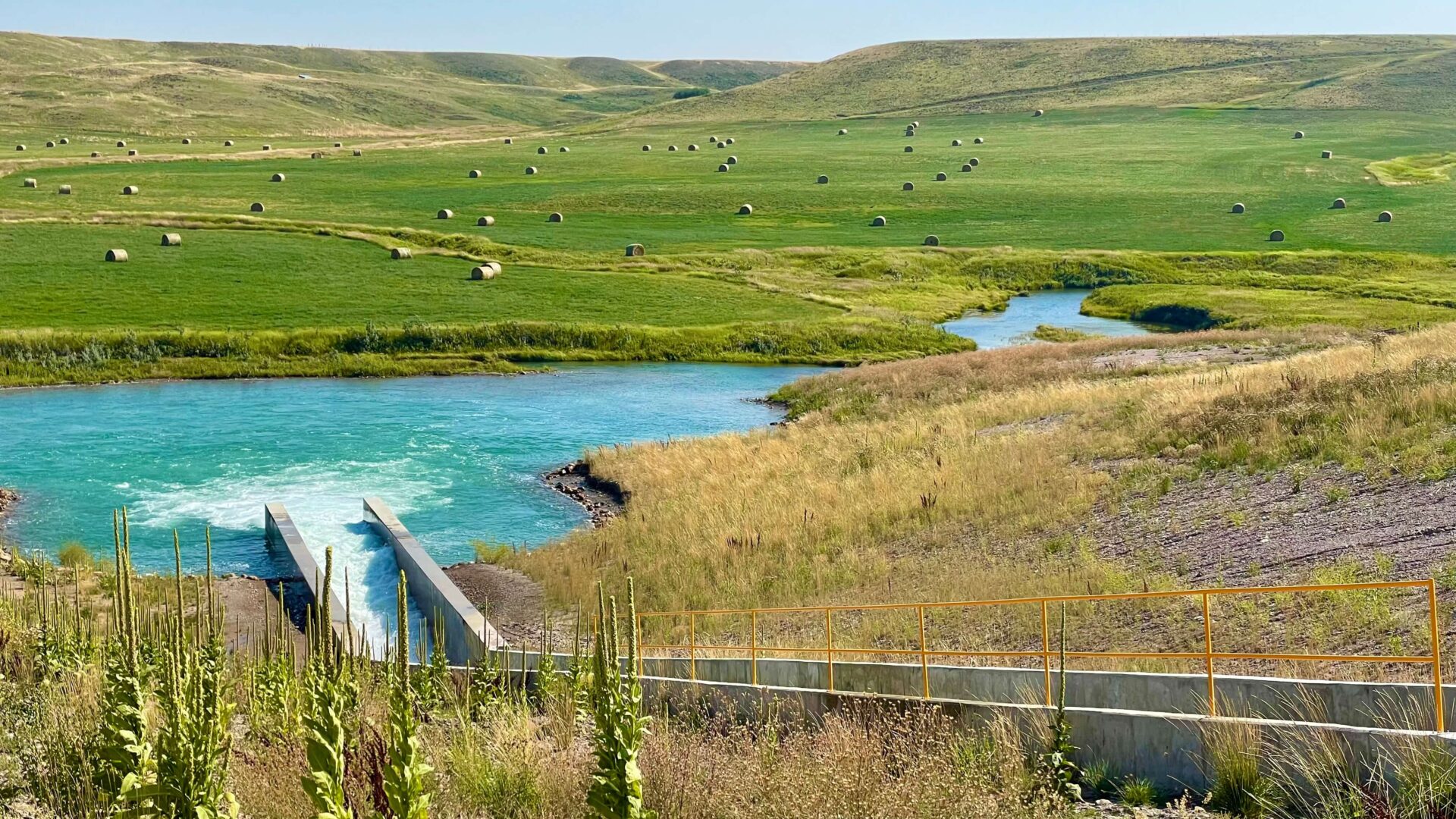As Montana attorneys specializing in natural resource and water law, at Ferguson & Coppes we are often asked: “What is Montana water law? How do Montana water rights work?” In fact, Montana has one of the more sophisticated legal systems for administering water in the US, among other states like California, Colorado and Hawaii, thanks in large part to Montana’s 1972 Constitution.
The Journey from Riparian to Prior Appropriation
It may seem obvious to those familiar—especially if you’ve grown up irrigating or “changing the water” for your family’s farming operation—but access to clean water has quickly evolved into the most valuable property interest one can possess. The “ownership” of water is treated differently depending on where you are located and does not actually mean that one owns the water in the way we traditionally understand property rights. Rather, water rights are “usufructuary” rights meaning that, when one owns a water right, it is a right to “use” a certain amount of water instead of the right to “own” the water itself. Each state applies their own set of laws and regulations to its administration and use. Except for the Clean Water Act, which regulates for pollution and quality of the Waters of the United States, there is limited regulation of water beyond each state’s natural resources agency or other applicable state governance. The states’ administration is framed and limited by the Public Trust Doctrine, which provides that each state holds their natural resources in trust for the public. In effect, the management responsibility for most of the available freshwater resources within the United States falls in the hands of each state. Each state is therefore entrusted to manage and administer this invaluable resource according to their own laws and regulations and in a way that protects the public’s ability to perpetually benefit from its existence.
The result is an incredibly diverse and legally complex arrangement of water rights spanning the continental US, but typically following two major trends or some hybrid. In the Eastern United States, where the American legal system was simultaneously developing, water was–and largely still is–managed according to a Riparian theory. This doctrine is elementary on its face: those who own the land bordering surface water sources also own their respective share of the use of available water. This is then shared according to each property owner’s pro-rata portion of that water supply at any given time or based on a reasonableness standard. (Of course, countless variations now exist even within the Riparian category).
Seemed simple enough.
But, then again, creating new law is rarely that simple.
‘Among the customs generally adopted in the (mining) camps was the first to divert a stream to use his rocker or pan had the first right to that amount of water.’

As homesteaders travelled West, and mining and agricultural enterprises expanded, the difference in the landscape and natural resource availability became obvious. This was especially true of water. In fact, the difference in availability was stark. Before this “destiny” manifested, water users were accustomed to usage in the East, which benefitted from densely located and abundant fresh water sources. Unfortunately, the Arid West wasn’t so reliable, as homesteaders and miners quickly came to realize. Paired with rising populations and the general lawlessness of the American West at that time, it was clear that some form of prioritization and organization of the available water was necessary.
In response, a new Western doctrine arose: Prior Appropriation. More specifically, the “birth of the prior appropriation system of distributing water has its roots in the California gold rush[:] ‘Among the customs generally adopted in the (mining) camps was the first to divert a stream to use his rocker or pan had the first right to that amount of water.’” According to this new legal interest, the first in time was simply the first in right. In other words, those who first arrive to use the water are the lawful priority user of whatever amount of water they first rely on and put to beneficial use.
If a new homesteader establishes a water diversion upstream to a prior user or “appropriator”, the junior appropriator must ensure the original use of the senior’s water remains consistent, regardless of the junior’s additional use. Likewise, if you divert water downstream of an existing upstream user, you may not always experience or be legally entitled to your full expectation of water in the late summer months when water is naturally less available, if at all. If your water doesn’t appear when expected as the senior appropriator, you make “call” on your neighboring junior users to cease their own use in order to fulfill what you were legally entitled to use.
In the West, these arrangements persisted and found themselves solidified in law. Montana, newly ratified as a territory in 1864, found itself uniquely situated to address the looming legal questions surrounding Western water use given its abundant water and other natural resources.
Historic Water Rights in Montana
Before any bells or whistles, Montana abided by a similar water administration scheme as that of their western sister states. In other words, general legal processes existed to allow individuals to claim their water right, particularly stating the first date their water was beneficially applied to their property, i.e., their priority date. This allowed homesteaders and others to record and establish legally enforceable priority dates against surrounding and incoming junior users. Typically, this was done by simply filing a statement of usage and other details of the claim at your nearest courthouse. As one can imagine, the Montana territory at the time was sparsely populated and it was not uncommon that early homesteaders were located hundreds of miles from the nearest courthouse. What’s more, surveying of the Montana territory didn’t begin until after 1865 meaning that early homesteaders often head to rely on other landmarks or adjacent landowners in order to describe the property in question. As a result, these old records are often riddled with inconsistencies and other oddities, albeit they are often still relied on by Montana courts as evidence of historic water use.
This system, in its various forms, worked for more than a century until it became apparent that water was continuing to be “over-appropriated,” i.e., more was legally claimed than physically available. The uses claimed, and continuing, were threatening to overwhelm even Montana’s abundant supply without additional regulatory involvement, for better or worse. As early as the late 1800’s, the few Montana courts in existence had been attempting to resolve the countless disputes among early water users and identifying water sources that were dry as early as July as a result of the increased irrigation and other uses. Similarly, these historic decrees are often relied on today by Montana courts to determine and further corroborate these historic uses.
In response, the Montana Legislature promulgated the Water Use Act of 1973. This Act, among other things, provided parameters and notice to Montana water users to file a Statement of Claim for any water uses existing prior to 1973. Property owners claiming water rights after this date (with many caveats, of course) would instead be required to obtain a new water permit from the Montana Department of Natural Resources and Conservation (DNRC). Further, if anyone sought to change certain material elements of their historic water right, they would be sent to the DNRC. In this way, Montana conveniently split water rights into two categories: Pre- and Post-1973 Water Rights. Pre-1973 water rights filed pursuant to the Water Use Act fall within the Montana Water Court jurisdiction, while the issuance of post-’73 rights falls under the Montana DNRC’s jurisdiction. You can learn more about the Montana DNRC’s role in administering water post-1973 water rights here.
Montana Water Court and Future of Water Law
You may have been hearing more news about the Montana Water Court recently, and for good reason. The Montana Water Court was established as part of the 1973 Water Use Act and officially opened its doors to Montana in 1979. Currently the Water Court is “untangling 219,000 water right claims to determine who is ‘first in time.’ Like seven other Western states, the judicial branch has taken the lead in this process, but [the DNRC] plays a major role.” (A Short History of the Water Court, footnotes omitted).
With the same judicial power as any District Court in Montana, the Water Court specializes in resolving water right controversies arising from pre-1973 water rights. Primarily, the Water Court is focused on reviewing claims and objections basin-by-basin and issuing final decrees on the historic water rights claimed within. Although this has been a long and arduous process, reports from Water Court judges at the 2023 Water Law Section meeting indicate that they are progressing steadily through claims and anticipate issuing final basin-wide decrees in the next five or so years.
Certification of District Court Matters to the Water Court
In addition to resolving and issuing these basin-wide decrees, it is common for attorneys in Montana to certify certain questions arising in the District Court for the Water Court’s review and judgment. This has become a useful tool in Montana law insofar as District Courts are already commonly occupied by criminal and other more common civil disputes. Water law is considered a more specialized field, similar to Bankruptcy, and is not typically on the top of a District Court judge’s mind given their many responsibilities. Therefore, when a dispute involves a complex water right issue we often proceed by requesting that the discreet water right question(s) be certified to the Water Court. Upon a successful certification and Order from the District Court judge, the Water Court will assume jurisdiction over these questions and begin its own civil litigation process before holding a hearing on the matter(s). After the Water Court has issued its Final Order, it is common for the matter to be resumed in District Court pursuant to and with the Water Court’s findings in mind or otherwise proceed on an appeal track to the Montana Supreme Court before being sent back to the District Court for determination on the unresolved matters. In this way, the Montana judicial system is engineered to ensure that legal questions surrounding water rights are given proper review under specialized and experienced judges, resulting not only in more just results but also more efficient process for all parties. We always recommend that you speak with an experienced water law attorney if you think you have a potential dispute involving a water right, especially if the right arises from a pre-1973 water right.
The initial designs for the Water Court assumed that at some point in the future, the Water Court would likely become moot. The idea at the time was that once all basins had been issued a final decree and all of the pre-1973 water rights had been settled, the Water Court would no longer have any use. Perhaps idealistically, lawmakers at that time structured the law so that any water rights claimed after 1973 would be applied to and issued by the Department of Natural Resources and Conservation. In hindsight, lawmakers not only underestimated the complexity and contentiousness of simply resolving the historical rights, but also may have miscalculated the legal complications that would arise while simultaneously issuing new water rights to those using and claiming water after 1973.
Therefore, it was hardly a surprise for those involved when it became clear that streamlining Montana’s water adjudication and permitting process would not be quite so easy. In fact, it has turned into one of the most complex fields of law arising from the American West.
What’s Next?
Today, lawmakers continue to debate the future of Montana Water law, and particularly the Montana Water Court. For those of us who have come to depend on the specialization and institutional knowledge provided by judges such as Chief Water Judge McElyea and Associate Water Judge Brown, and all those who work within the Montana Water Court, the value provided to Montana water right holders is undeniable. Based on the trajectory and growth of Montana in the last few years the need to maintain this legal resource only seems more crucial to the future of Montana. At Ferguson and Coppes, we at least can attest that there is no shortage of legal controversy arising out of Montana’s water right system.
So, back to our first question: what is Montana water law? At Ferguson & Coppes, we see Montana water law as a unique and exciting field of legal practice that has an important role to play in Montana’s future. Even so, we understand that navigating water rights and the legal system can be daunting and we make it our goal to help you through that process. If you think you may have a claim to an existing water right or are interested in filing for a new water right, contact our office for a free consultation with one of our experienced water law attorneys.
See below for more resources:
Check out our blog post, States and Streambeds (coming soon), for more information on the intersection of private use and state ownership of water.
To learn more about how to file for a new water right in Montana, keep an eye out for our blog series on filing for a new water right, Part I, Part II, & Part III.


